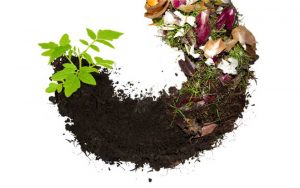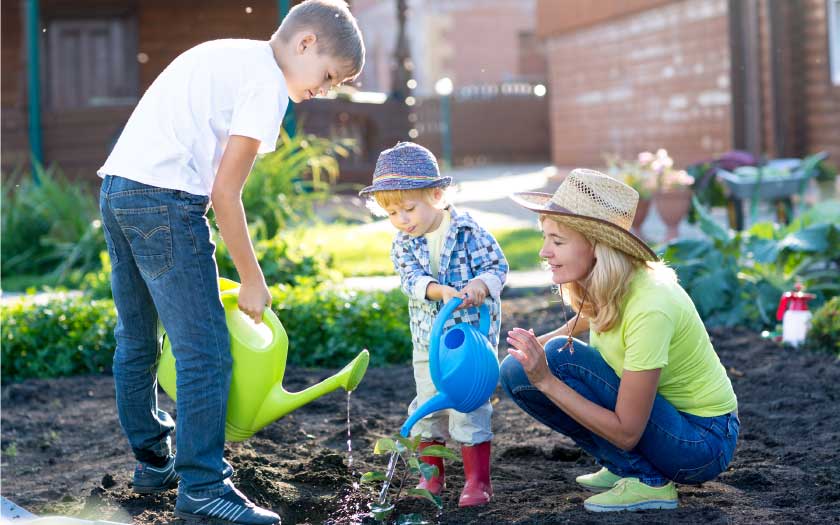Growing a food garden, whether directly from the ground or in containers or pots is an enriching experience. Vegetables, herbs, fruits… what better way to go organic than to grow your fresh produce? If you’ve been toying with the idea of growing a food garden, read on.
Gardening itself is hands down one of the most satisfying and beneficial pastimes. Even if you don’t happen to have an actual yard, you can still cultivate your garden in pots, containers, etc. Think about it — the exceptionally small investment in seeds and basic set-up can provide you with an endless supply of nutritious and delicious vegetable month after month.

Where do I start?
Before you begin your gardening journey or make a beeline for the nearest hardware store for your gardening needs, the first thing you need to do is to think about the following:
- What do you want to plant?
- Where will you be planting them?
- What will you need to get started?
What to plant
Our climate is such that a myriad of vegetables and herbs can be cultivated and with appropriate care, they’ll flourish with abundant produce! Mustard leaves, kale, spinach, lettuce, long beans, chillies, lime, onions, ginger, and lemongrass are just some of the edible plants that grow well in our Malaysian soil. How many types of plants you’ll be able to cultivate depends on how much space you have.
Where to set up your food garden
If you live on a grounded property with a back or front yard, you’ll practically have a perfect place to start. All you have to do is to work the earth and see to the soil’s additional needs such as manure or compost. Additionally, you might also want to set up raised beds for certain vegetables so that they’ll flourish better.
If you live in an apartment or a landed property with no earthy land, then a potted garden is the answer. This can be done at practically any part of your home that gets a fair share of sunshine and where the pots or containers can be watered daily, including window sills, a balcony, etc.
Does money grow on trees?
Not literally, but if your food garden grows well, you could be saving quite a bit. So go ahead and start growing your favourite herbs and vegetables!
What you need for a food garden
- Seeds
- Pots & containers (For potted garden)
- Raised bed (For landed garden. Visit your nearest nursery for advice)
- Watering can
- A small trowel or 3-pronged fork for lifting earth
- A garden table to work on
- Secateurs/garden shears for pruning
- A garden dibber — for poking holes into the soil for bulbs, seedling or seed
- Bamboo canes — for climbing plants to creep on
- Compost bin — to make your compost
- Toolshed — to store your gardening tools
- Gloves — to protect your hands
- Soil sieve — to boost the efficiency of your soil
Important points to ponder before you begin
Firstly, plan carefully and start small, for sure you’d want to be proud of a small but yielding garden than be frustrated with a big, fruitless one!
Ensure the space you choose receives enough sunshine. Most vegetables and herbs thrive when exposed to at least six hours of sunlight.
In regards to that, mind your placement too. Avoid placing or planting your garden too near a tree, for it’ll either shade them from important sunlight or steal essential nutrients from the soil. Note too that a garden closest as possible to your door will help deter wild creatures from getting to your produce.
Vegetables and herbs need to be tended to, so be diligent in watering and weeding your plants.
Container gardening
The best thing about container gardens is that it’s relatively inexpensive to set up and maintain. Apart from buying a few essentials, like good quality soil and compost, it can be done on a low budget and is extremely versatile. If a container, any container, is large enough to hold a decent amount of soil and can have a few holes at the bottom for drainage, it can be used for container gardening. This being said, countless other items can be made into container gardens, such as old crates, buckets, wheelbarrows, etc.
Growing vegetables in containers give you much more control over your plants. You can easily move them around if they’re not thriving in a certain spot and if they’re small enough, they can even be indoors, provided there’s a sunny spot for them.
Some basic rules of container gardening:
- Containers you use must have holes in the bottom for drainage.
- Unlike wild plants that can survive on their own, container gardens need to be tended to and watered twice a day.
- Resist overcrowding your container or the plants will end up competing for space and nutrients to grow.
- When filling up your container with soil, be sure that it’s free from old roots and other plant matter.
- Dig, mix, and aerate the soil well before planting your seeds.
Benefits of raised garden beds
If you intend to start your garden in your front or back yard, you might want to consider building one or more raised beds for your plants. The following indicates why:
- Easier access and more comfort by minimising the need to bend or kneel while gardening
- Greater productivity due to better drainage and deep rooting
- Opportunity to use smaller spaces
- Allows for an ideal growing mix
- Allows for a longer growing season without much labour
- Can be set up on concrete land
When placed or set up in a regular yard, raised bed vegetable gardens may be the answer to poor soil issues, for you get to control the type of soil you use. This makes it possible to plant a variety of plants that might not flourish on the ground. Raised beds can be made to order or built from scrap material.

Compost
Composting is a simple way to add nutrients to your garden soil. You will need a compost bin and you can use almost any kitchen waste to create rich humus for your lawn and garden. Composting can help divert some household waste away from the garbage bins.
Good things to compost include vegetable peelings, fruit waste, flowers, chicken manure, coffee grounds, tea bags, plant prunings, and even grass cuttings. These are fast to break down and provide important nitrogen as well as moisture. Crushed eggshells can be included to add useful minerals. It’s also good to include things such as cardboard egg boxes, scrunched up paper, and fallen leaves. These are slower to rot but provide vital fibre and carbon and also allow important air pockets to form in the mixture.
This link will give you an idea of what composting is all about: www.youtube.com/watch?v=9zvFresyPmA


